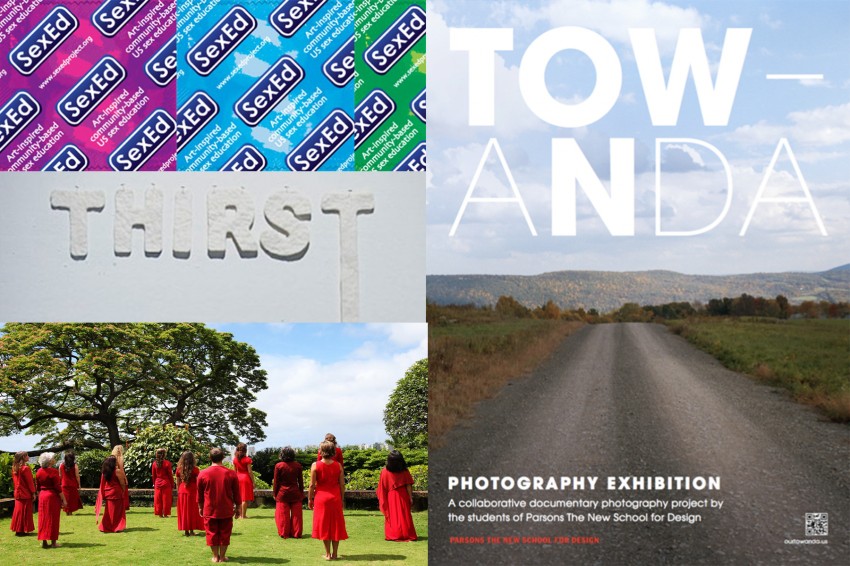Up now in the UC lobby is a showcase of various projects related to the new Social Practice minor at The New School. Initiated by AMT faculty Shane Aslan Selzer, and developed with Lydia Matthews and Norene Leddy, the Social Practice minor provides a pathway for undergraduate students to pursue socially engaged projects that initiate exchange, envision new social relations, and provoke individual/collective actions. The required “gateway” course for the minor, “Social Practice Concepts and Contexts,” will be taught by Lydia Matthews in Spring 2015 as a ULEC, enabling multi-disciplinary students from various divisions to access the minor.
AMT asked Lydia Matthews a few questions about the minor, and “social practice” in general.
What does social practice mean to you?
Socially-engaged art and design practice explores how to work with people and communities rather than working “for” various audiences or making work “about” them. At its heart, it involves developing the kinds of skills that enable you to open up new kinds of social relationships in order to provoke dialogue or reveal things that go beyond any one person’s sensibility or perception. For me, knowledge exchange is at the heart of these projects, and the pleasure of doing work out in the world rather than exclusively within the confines of one’s studio.
Why should a student consider Social Practice as a minor?
The Social Practice minor can complement, widen or deepen a variety of disciplinary practices. It’s a way for students to become more aware of the politics and poetics that operate at the heart of collaborative projects in the public sphere. Currently there is a great need and demand for creative people who understand how to work effectively within a range of local and global contexts. The minor will help them better understand how to bring their skills and ideas to the table, but also wisely co-design projects that generate out of those mutual exchanges with individuals and groups they are interested in engaging.
How does social practice inform your own artist practice?
As a curator, I enjoy doing projects that begin with a tough question rather than a determined statement, so that I learn new things from the experience of creating a show. The project I’m currently working on in Tbilisi, Republic of Georgia is a socially-engaged one: it asks “how can we begin to imagine living in a trashless society?” In general, these projects orchestrate exchanges between a variety of people from different walks of life–artists, designers, scholars, diverse community members, focused on issues that local communities have expressed interest in. Rather than focusing on objects alone, I like to think of curating as a means to develop a public platform that includes an exhibition, but also workshops and other programs that more deeply explore the objects that are on view. It is about sparking new kinds of conversations, new social relations and new possibilities within local communities.
Find out more about each of the selected works:
Towanda (full exhibit up now to Nov. 13 in Arnold and Sheila Aronson Galleries Sheila C. Johnson Design Center)
Essex Street Academy + Parsons Publications
Vera List Center for Art and Politics Biennial Prize: Dorchester Projects
DEED (Development through Empowerment, Entrepreneurship, and Design)

